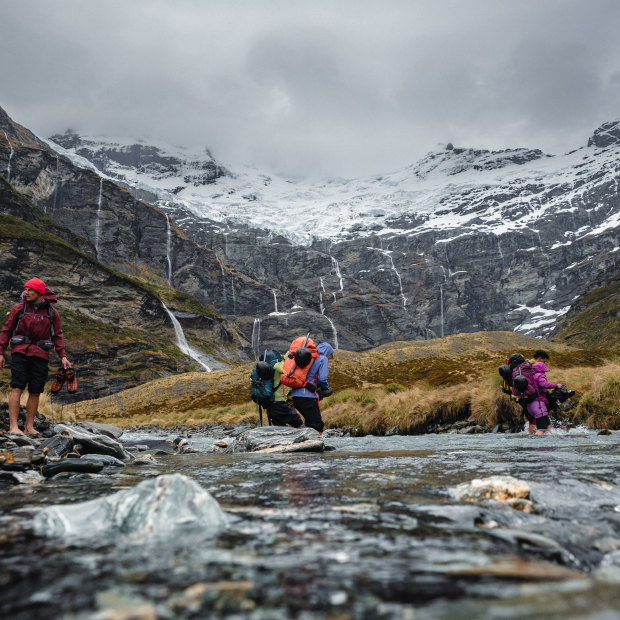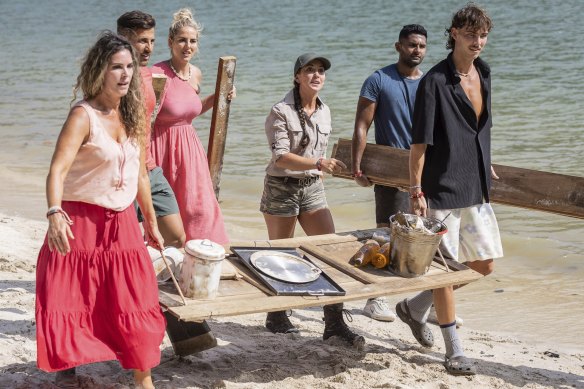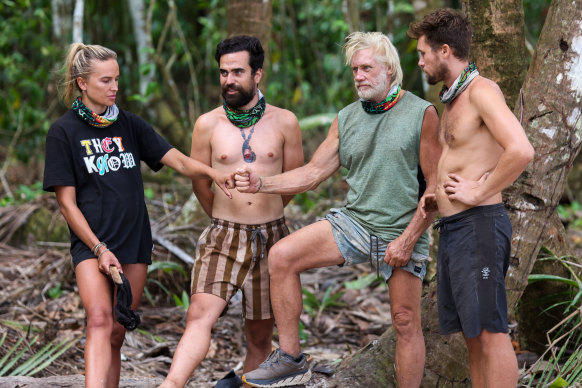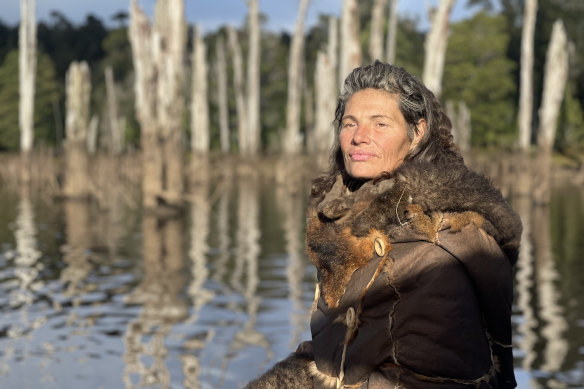Survival shows are our latest TV obsession, but how long can it last?
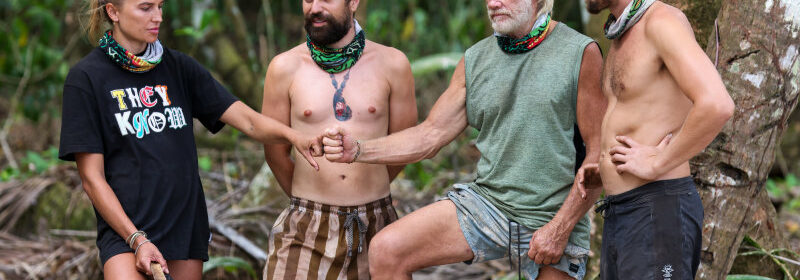
By Karl Quinn
Contestants traipse through the wilderness of New Zealand’s South Island on the reality TV survival show The Summit.Credit: Nine
Save articles for later
Add articles to your saved list and come back to them any time.
There have been so many survival shows on Australian television this year – The Summit on Nine*, Million Dollar Island on Seven, Australian Survivor on Ten, and Alone Australia on SBS – that you have to wonder if they can all possibly survive.
While the genre is clearly so hot right now, not every show has landed with audiences. Survivor – dreamt up by Englishman Charlie Parsons in 1992, first airing in 1997 as a Swedish version called Expedition Robinson, and now in its 44th season in America – remains one of Ten’s key franchises, averaging 894,000 viewers across the season (down on its peak in 2019, but a solid result in this era of declining free-to-air audiences).
The first local version of Alone (after nine in the US and multiple Scandinavian iterations) has been the breakout hit of the year, giving SBS its biggest ever audience for a home-grown production (it averaged 1.19 million an episode, and is still growing).
But the response to Seven and Nine’s new shows has been tepid. Does that suggest the tide is turning as audiences tire of the game-led contests, and perhaps hunger instead for a purer format even as they retain fondness for the granddaddy of them all?
Together, alone: The contestants on Million Dollar Island work in teams, but ultimately strive to win it all for themselves.Credit: Seven
“I wouldn’t say the mood seems to be changing at large,” says Shannon Guss, who writes and podcasts about Survivor (and is paid for some of that work by broadcaster Ten). “But with saturation in the market, new shows need to both stand out with a point of difference and be done well, or viewers will simply choose a better option. The myriad of new formats just have to do it well or reinvent the wheel in an interesting way.”
Seven’s bold play in the space, Million Dollar Island, drops 100 people on a postcard-perfect Malaysian island and puts them through a range of Survivor-style challenges, with a million-dollar prize up for grabs (each contestant starts with a bracelet signifying $10,000; as they are eliminated, those bracelets go into the prize pool).
It is a local version of a show developed by Talpa, the Dutch production company founded by the king of reality contests, John de Mol (the man responsible for Big Brother, The Voice, Deal or no Deal and Fear Factor, among others). But it looks as vulnerable as some of its ill-prepared contestants.
Launching on Monday with a national audience of 625,000 viewers, by Wednesday it had slumped to just 420,000 (207,000 in the five metro capitals).
Seven is putting a brave face on it – “Million Dollar Island has been successful for us, averaging 535,000 overnight viewers so far across Channel Seven and 7plus,” a spokesperson for the network said on Thursday – but they’d have been hoping for a much stronger result for a show bristling with tropical beaches, taut bodies and big treasure.
Australian Survivor remains a strong performer for Network Ten.Credit: Nigel Wright
Nine’s New Zealand-set The Summit upped the stakes on the challenges, dangling its contestants off rope bridges strung across ravines, and sometimes inducing them to acts of bastardry in order to progress. It averaged 754,000 viewers nationally (418,000 metro) across its 10-episode season.
“We’re very proud of it,” says network head of content, production and development Adrian Swift. “We would have hoped for slightly more than that, but the one thing I told everyone is this is not a normal Nine show. Almost all our shows are based in those things you understand – we all understand home ownership, relationships, whether someone can sing or not. But very few of us has ever been in situations like this, and you’ve got to make people care about the outcome.”
Though some short-run series such as Struggle Street pulled more viewers an episode, SBS claims Alone Australia is the most successful original production the network has ever had in terms of consumption (total minutes watched), and believes it will have a long tail yet on its on-demand platform.
“The bravery of the format is the complete absence of the producer’s hand,” argues Ben Ulm, head of content at ITV Studios Australia, which made the show for SBS. “There are no set challenges, no elimination rounds, no end game. It’s a competition, but how can you compete against someone when you have no idea where they are or how they’re faring? Alone is a weird, unique format in that you’re competing against yourself.”
Amelia Fisk, creative director at Endemol Shine Australia, which produced both The Summit and Survivor, was also impressed by the stripped-back simplicity of Alone. “But there is always going to be a place for a Survivor too, because social strategy is so fascinating to watch.
Gina Chick in the Tasmanian wilderness on Alone Australia, the year’s breakout hit.Credit: SBS
“It’s intriguing to see how a game can twist human behaviour,” she says. “But because it’s a game, not real life, it gives you permission to do things you wouldn’t in real life. People are going to play the game as a hero or a villain, and it doesn’t necessarily reflect who they are on the outside.”
That kind of urge to villainy was evident from the outset on Million Dollar Island, which started with a mad scramble for resources, and included one contestant – described as an environmentalist, but calling himself a “forest builder” – declaring he was willing to do “whatever it takes” to win. “If I’ve got to cut someone’s left leg off and eat that over the fire, that’s what I’ll do,” he said.
(The dog-eat-dog impulse is nowhere more evident than in Netflix’s entry into the genre, Outlast, a rather nasty Hunger Games-style contest in which the possibility that not all of the American survivalists will make it out alive looms large.)
Individual ambition is often at odds with collective endeavour in these shows, with the games and challenges designed to ramp up that tension. But for viewers to care about the outcome, they first have to care about the competitors – and it’s a balance that can be difficult to achieve.
“The human and relationship element ingrained into many of these shows, as funnelled through a competition format, necessitates innovative strategic thinking to emerge victorious,” says Guss. “Game theory, social strategy and physiological warfare are all essential components [for success].”
According to Swift: “You’ve got to be very careful about making it too much a game. It’s got to be a story of personal triumph. If it’s too gamey, the stakes are too low. Every reality show I’m involved in is a version of a telenovela – you introduce the characters, you introduce the stakes, you care about the character and it becomes heightened. If it’s all a bit of a lark, people just don’t care.”
For Endemol’s Fisk, the key to what works and what doesn’t is simple.
“You’ve got to have likeability,” she says. “You need the everyday Aussie who can battle against adversity and thrive.
“That, at its core, is adventure reality. And if you get it right, there will always be appetite for it.”
*Nine is the owner of this masthead
Contact the author at [email protected], follow him on Facebook at karlquinnjournalist and on Twitter @karlkwin, and read more of his work here.
Find out the next TV, streaming series and movies to add to your must-sees. Get The Watchlist delivered every Thursday.
Most Viewed in Culture
Source: Read Full Article
